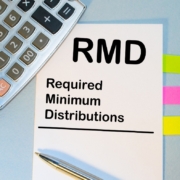IRS Issue Snapshot: Combination Retirement Plan Deduction Limits
- Learn about qualified plan rules.
- Discover employer contribution deduction limits for combination retirement plans.
- Find out how to calculate deduction limits.
The IRS occasionally publishes “Issue Snapshots” to provide an overview of a tax topic for its employees. Recently, the tax agency released “Issue Snapshot: Combined Limits under IRC Section 404(a)(7).” The publication discusses the limits on contribution deductions when an employer provides a combination retirement plan. We commonly refer to a defined contribution (DC) and defined benefit (DB) retirement plan as a “combination” retirement plan.
Qualified plan rules
Generally, an employer’s contributions to a qualified retirement plan are deductible if they’re ordinary and necessary expenses of carrying on a trade or business and are compensation for services rendered.
However, limitations exist for an employer’s qualified plan contributions. For example, what if an employer sponsors a DC plan, such as a 401(k)? The employer is allowed a deduction for contributions of up to 25% of the compensation paid or accrued to plan beneficiaries during the employer’s tax year.
What if the employer contributes to two or more DC plans? Then we consider those plans a single plan for purposes of applying the 25% limit. Meanwhile, the tax code provides a separate maximum deduction for contributions to a DB plan (often called a “pension plan.”).

Combination retirement plan limits
If an employer has a combination retirement plan, Section 404(a)(7) of the tax code limits that employer’s contribution deductions. These limits apply only in a tax year when:
- At least one participant benefits under both plans and receives allocations other than elective deferrals in the DC plan (called “overlapping coverage”),
- The DB plan is exempt from Pension Benefit Guaranty Corporation coverage, and
- Both the DB and DC plans are single-employer plans.
If a DB and DC plan have overlapping coverage and employer contributions to the DC plan (other than elective deferrals) don’t exceed 6% of the aggregate compensation of DC plan beneficiaries, the limit on combination retirement plans doesn’t apply.
However, what if there’s overlapping coverage and the employer contributions to the DC plan (other than elective deferrals) do exceed 6% of aggregate compensation of the DC beneficiaries? Then we apply the combination retirement plan limits by considering only those DCs that exceed 6%.
Calculating the limit
According to the Issue Snapshot, the separate deduction limits for the DB and DC plans should be calculated before applying the Sec. 404(a)(7) limits. Thus, the combined deduction limit on contributions to a single-employer DB plan and a single-employer DC plan that have overlapping coverage is the greater of:
- 25% of the compensation otherwise paid or accrued during the tax year to beneficiaries, or
- the minimum required contribution to the DB plan for the plan year or the excess of the funding target over the plan’s assets for that plan year.
IRS insight into the combination retirement plan
According to the IRS, “Issue Snapshots may not contain a comprehensive discussion of all pertinent issues, law or … interpretation of current law.” However, they do provide insight into what the tax agency is looking at. If your organization offers a combination retirement plan, Fiducial can help you assess the tax impact. Call Fiducial at 1-866-FIDUCIAL or make an appointment at one of our office locations to discuss your situation.
Ready to book an appointment now? Click here. Know someone who might need our services? We love referrals!
For more small business COVID-19 resources, visit Fiducial’s Coronavirus Update Center to find information on SBA loans, tax updates, the Paycheck Protection Program, paid sick and family leave.









